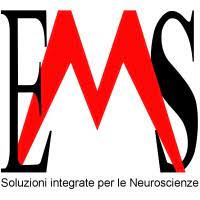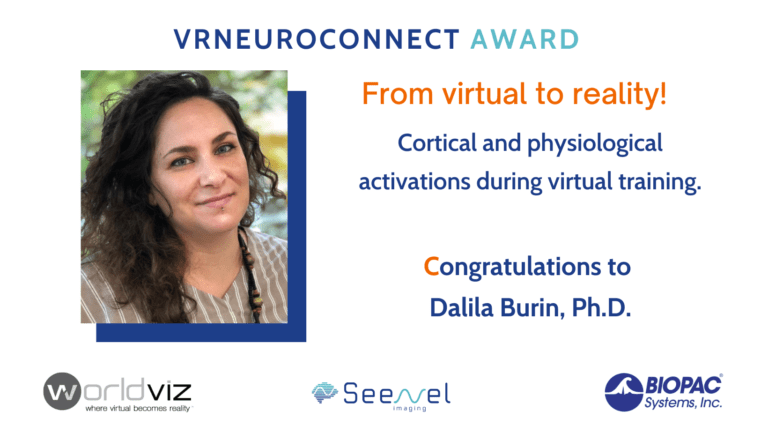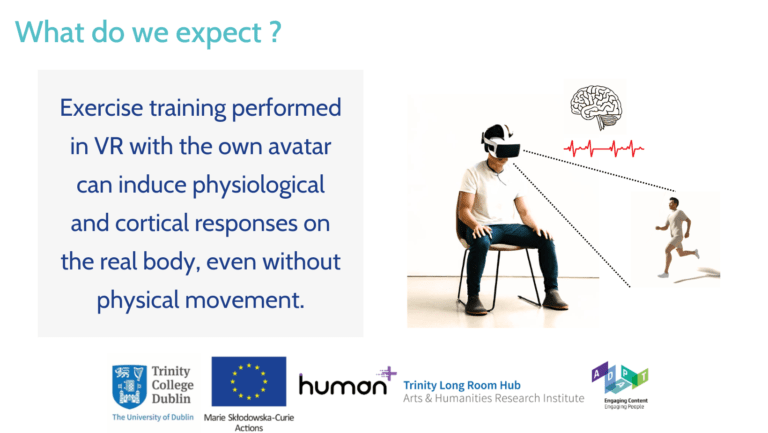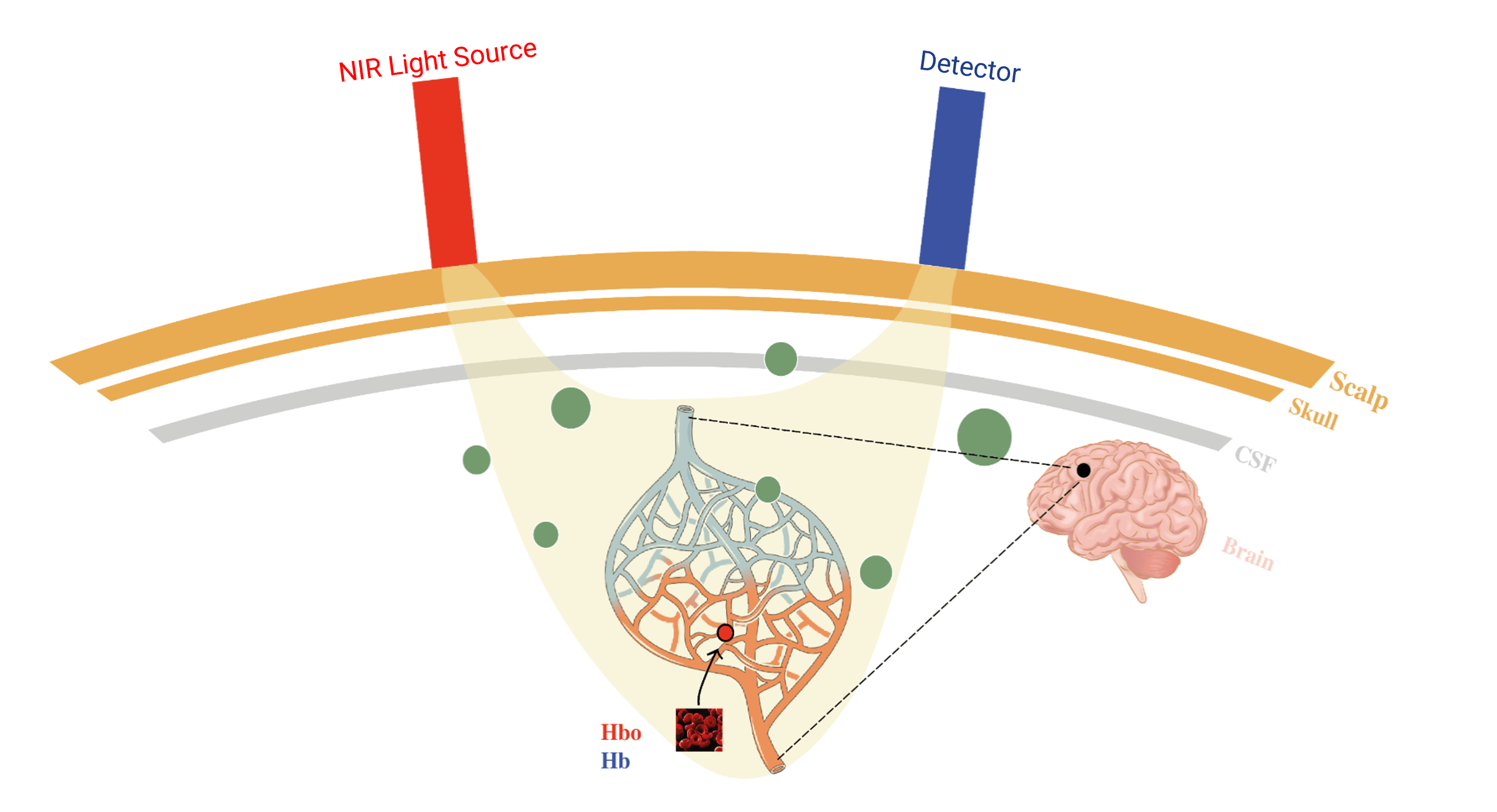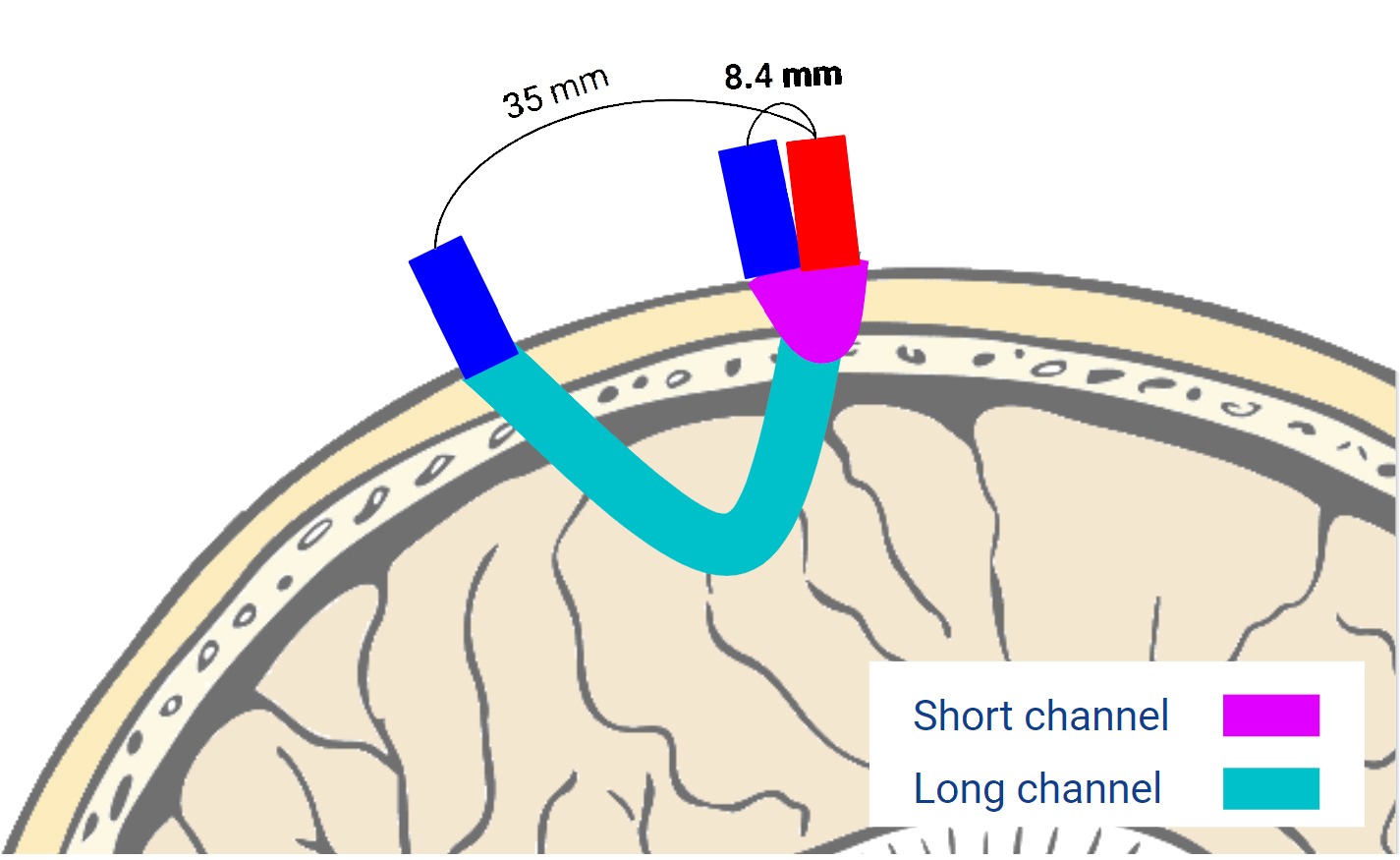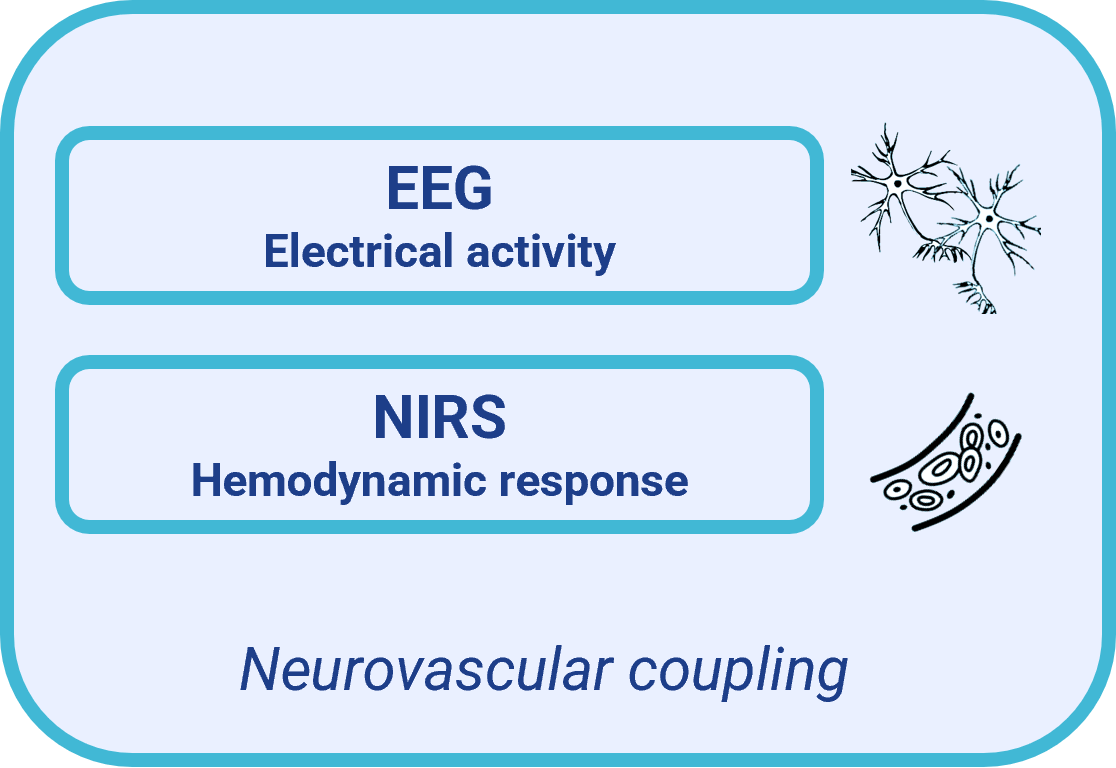Helping neuroscience understand
How the brain works
Seenel Imaging
Research-based from INSERM lab, Seenel Imaging commercializes Medelopt®, a breakthrough neuroimaging device.
Developed by world-renowned clinical neuroscience and signal processing researchers, along with a well-rounded team of electronic onboarding
and medical devices experts, Medelopt® is the perfect multimodal functional brain exploration platform for neuroscientific researchers.
Our technology

Pr. Fabrice Wallois
Clinical and Neuroscientific Advisor
Head of the Pediatric Clinical Neurophysiology Department at Amiens Picardy Hospital
Director of the Multimodal Analysis of Brain Function Research Group, Inserm UMR 1105
“My research focuses on the analysis and maturation of neural networks, be they respiratory or cortical, physiological or pathological, in children and in animals. We have developed tools that make it possible to describe electric (EEG) and metabolic (NIRS) activities. Their modulations in pathological situations, as well as tracking the sources of these cerebral activities in children, and particularly prematurely so, are central to this research. In 2004, we created the GRAMFC, an innovation that allows simultaneous analysis of modifications in electric (High resolution EEG) local hemodynamic (High Resolution NIRS, Optical imaging) cerebral activity, both physiologically (cerebral maturation) and for pathological conditions (anoxic ischemia in premature babies, prenatal neurological suffering, and convulsions/epilepsy in children). With its combination of neuropsychologists, intensive care paediatricians, and signal processing experts, our research unit (EA4293) was recognized both in 2008 by the French Ministry of Research and in 2010 by the Inserm (U 1105).
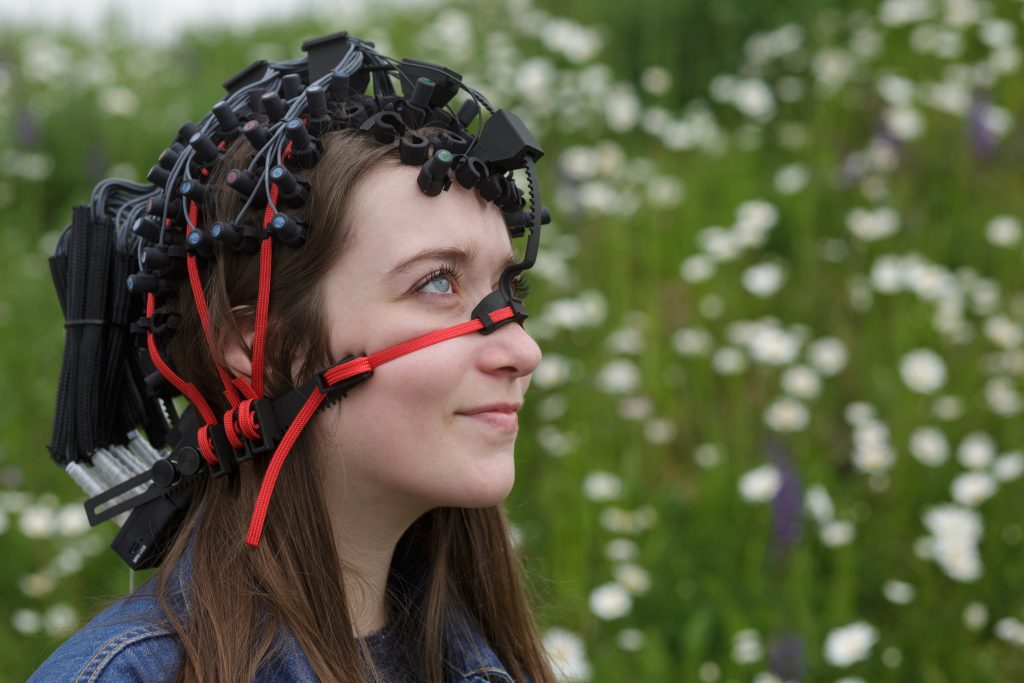
Research-based** (INSERM U1105/UPJV/CHU Amiens Picardy) and protected by 3 patents,
Medelopt® is a breakthrough innovative multimodal functional cerebral neuroimaging device.
Medelopt® provides high quality measurements of changes in oxy and deoxy-haemoglobin simultaneously with electric potentials.
**Safaie.J et al. (2013)
Key features

High density bimodality fNIRS/EEG
Hemodynamic (with 512 channels) & featuring electrical signal acquisition, Medelopt® provides accurate measurements for in-vivo 2D/3D functional brain mapping.
LED: 16 emitters / Electropods: 32 receptors / 8 EEG electrodes

Sophisticated technology crafted for Wearability
Medelopt® miniaturisation allows acquisitions on moving participants.

Designed for getting direct access to the scalp
Due to its unique design structure, Medelopt® solves the hair constraint which is the main fNIRS-related constraint that researchers encounter. LED-emitters and electropods come directly in contact with the scalp’s skin.

Customized
headset setup
Thanks to the headset design, sensor placement (NIRS emitters/receptors and EEG electrodes) can be set up to record the whole head, from the cognitive to the visual area.

Long recording
is now possible
Pressure zones are distributed homogeneously and uniformly around the head. Thanks to this, long recordings are made possible.
Applications
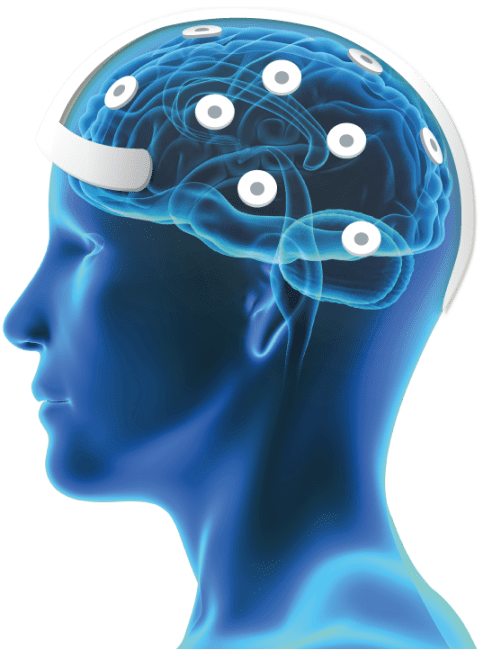
VIRTUAL REALITY
VR headsets can provide a highly immersive experience that can simulate a variety of real-world situations. This makes VR an ideal tool for studying human behavior and cognitive processes in a controlled and reproducible manner. By combining VR with fNIRS, researchers can gain insights into how the brain responds to different VR scenarios and stimuli. For example, researchers can use fNIRS to study the effects of VR on attention, memory, decision-making, and emotional response
SPORT SCIENCES
The possibility given by NIRS to move freely makes possible recordings of brain activity during outdoor activities or physical exercise. Exploring brain mechanisms involved in sport sciences improve our understanding of the relationship between mind and motor action or the effect of cognition on motor performance during localized exercise or whole-body exercise. For example, NIRS devices could be a way to explore decision-making mechanisms in reactionary sport like tennis or to determine how physical exercise influence the main executive functions.
COGNITIVE NEUROSCIENCE
The point of a wearable device for cognitive neuroscience that evaluates brain function in response to sensory stimulation lies essentially in the possibility of developing ecological stimuli that minimic everyday life situations in the best way possible. With a wearable device, it becomes possible to map out the brain structures involved in tasks such as driving or sports in real-life situations, as opposed to what is possible with fMRIs.
DBS/VSN
The appeal of the device lies in its compatibility with devices that involve electrical stimulation of the central (Deep Brain Stimulation (DBS)) or peripheral (Vagus Nerve Stimulation (VSN)) nervous system. This device thus makes it possible to map out the structures of the cortical surface that are modulated by these stimuli without having them be generated within the constraints of the electric fields produced by the stimulation or the constraints of magnetic fields inherent to MRIs and that make these maps difficult to produce in cases of DBS and VNS.
EPILEPSY RESEARCH
Epilepsy involves complex mechanisms that combine neuronal, astrocytic, and vascular interactions, particularly within the neurovascular coupling involved in epileptic spikes and seizures.
The simultaneous analysis of various neuronal and vascular compartments by the EEG in tandem with the fNIRS makes it possible to see the mechanisms involved and their interactions by a multimodal, multidimensional approach. Additionally, this simultaneous approach combines the EEG high temporal resolution with the high spatial resolution of the NIRS.
Customers & Partnerships
















